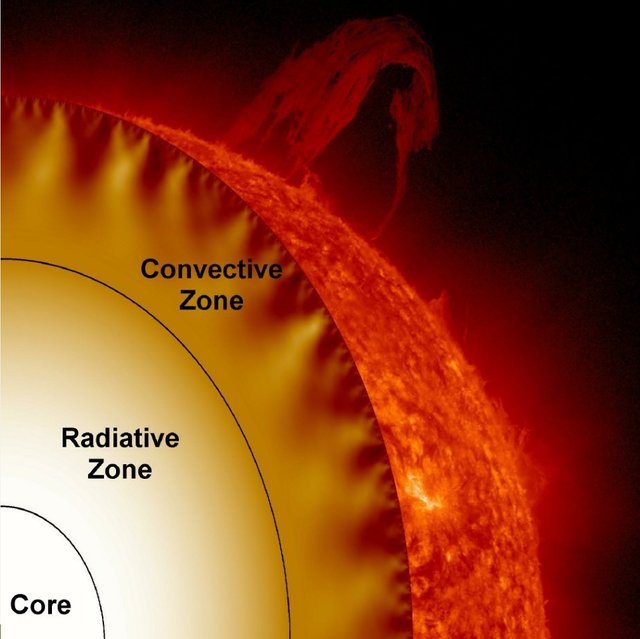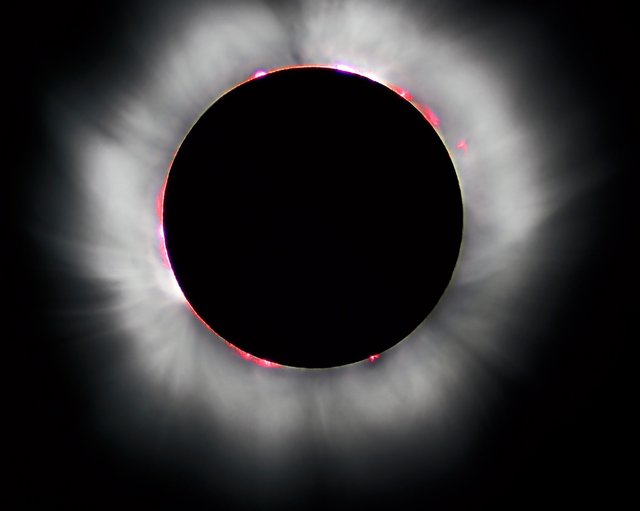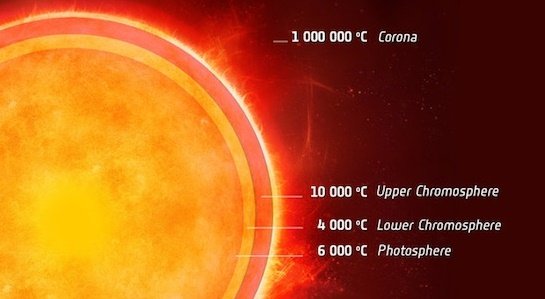The Sun - a short look into our star
Hello Steemians!
Writing about the Sun, our star today.
I think it is cool to learn a bit more about the most important source of energy for life.

The Sun is at the center of the Solar System.
Thanks to it's big mass, which is about 330,000 times that of Earth, the Sun has a massive gravity field, making all objects in the Solar System orbiting it.
In fact it takes up about 99.86% of the total mass of the Solar System.

The sun is about 4.6 billion years old, and got formed by a gravitational collapse of a molecular cloud.
It's made mostly out of hydrogen which accounts for about 73% and helium which accounts for about 25% of the Sun's mass.

Fun fact, the Sun is categorized as a yellow dwarf star and is estimated to be brighter then 85% of the starts in the Milky Way.

size comparison of stars
It does not have a set boundary and the Sun's center is approximately 1 astronomical unit (about 150,000,000 km) away from Earth's center.

The Sun's structure consists of the Core, which is also called the Solar core, the radiative zone, the tachocline, convective zone, the photosphere and the atmosphere.

The Solar core is the center of the Sun.
It is by far the hottest part of it, with temperatures of around whooping 15,000,000℃.
The Solar core is the part of the Sun where energy gets created, thermal energy by fusion.

After the core comes the radiative zone of the Sun. The radiative zone is the part where the temperature drops vastly, to about 2,000,000℃.
It is the main part of energy transmission on the sun.

Then comes the tachocline, the transition layer between the radiative and the convective zone.
It is believed that the Sun's magnetic field is generated in the tachocline layer.

The convective zone is where the solar plasma's density is low enough to make convective currents and move the Sun's energy to it's surface.

The visible surface of the Sun is called the photosphere. Above it the sunlight gets freed into space and the created energy of leaves the Sun completely.

The Sun's atmosphere consists of the chromosphere, the transition region, the corona and the heliosphere.
It is the part of the Sun which is visible during a total solar eclipse.

A fun and unexplained fact is that the chromosphere, transitional region and the corona are much hotter then the surface of the Sun.
The chromosphere is a 2,000 km thick layer where the temperature gradually increases with altitude, going up to 4,000℃.

The 200 km thin layer above the chromosphere is called the transition region, here is where the temperature increases swiftly up to 10,000℃.

The extended atmosphere of the Sun is called the corona, this is the layer where the solar wind happens, a flow of plasma bursting out from the Sun.
The temperatures in the corona tend to get up to 1,000,000℃.

Finally we have the heliosphere.
It is the outermost layer of the Sun and its atmosphere.
In this layer the solar wind gains speed and continuously travels through the heliosphere where it forms the spiral shape of the magnetic field of the Sun.

all images are taken form google
Follow and support me on the @Steemizen project and stay tuned for more!

"all images are taken form google" (from)
Doesn't mean you shouldn't try to provide proper citations for them :)
Citing images is important, we should always strive to provide credit to those who worked hard to create the images we use!
Anyway, really nice job with this post. Glad to see more educational content!
Thank you for the hint! Will do so in the future, most of the ones I take for the posts about space are probably from NASA (I'd guess)
mind me asking if you ment that I do it like in the new post about the interplanetary medium?
https://steemit.com/education/@steemizen/the-interplanetary-medium-the-dominator-of-space-in-the-universe
That looks good to me, you can also list the citations at the bottom so they look less intrusive to the post itself. :)
ok, thank you! :)
Very interesting but speculative, as there is no way to know for sure what is below the surface. It is too hot for any probe to explore it's internal structure. The surface and outward are seen and can be pretty well verified by thermal optics. Excellent theory and it makes sense. But then again, so did the Earth being flat to early man. :-)
100% agreed! I am no expert on this manner, the universe is something that I like learning more about though, so most of the content will be newly learned! :)